We Review The Best Microsoft Forms Alternatives for Better Customization and Control
Top Picks
Looking for a Better Microsoft Forms Alternative?
Microsoft Forms is a solid choice for quick surveys, quizzes, and polls. It integrates well with Microsoft 365 and handles basic form-building needs with ease. For many users, it does exactly what it promises, without added complexity.
But, it may not be the right fit for everyone. Businesses focused on lead generation, design control, or advanced logic often find its limitations frustrating. Conditional logic is basic, design options are limited, and embedding flexibility is minimal.
If you’re at this point, it’s time to explore other tools. We’ve created this Growform article to highlight the best Microsoft Forms alternatives for more demanding use cases.
Why Listen to Us?
We help businesses generate more leads with simple, multi-step forms built for performance, not fluff. We’ve worked across industries and tested numerous forms and form builders, so we know what drives results. That firsthand experience puts us in a strong position to share clear, honest advice on choosing a Microsoft Forms alternative that actually delivers.

Why Should You Consider Other Microsoft Forms Alternatives?
- Limited Customization Options: Microsoft Forms includes basic design tools like theme selection and logo uploads. However, it does not support advanced customization such as custom CSS or HTML, which can make it difficult to customize forms with specific branding.
- Lacks Advanced Features: The platform does not support more complex functions like file uploads, detailed conditional logic, or dynamic question types. This limits its use for more advanced needs.
- Minimal Third-Party Integrations: Although Microsoft forms work well with other Microsoft 365 tools, its integration with non-Microsoft apps is limited. This can be a barrier for teams using a wider range of software.
- Question and Response Limits: Each form allows a maximum of 100 questions and up to 50,000 responses, which may not be enough for large projects.
- Basic Reporting Tools: Reporting features are simple and offer only surface-level insights, making deeper analysis difficult.
Top 6 Microsoft Forms Alternatives to Consider
- Growform
- Formstack
- Paperform
- Wufoo
- Zoho Forms
- Google Forms
1. Growform
Growform is a drag-and-drop multi-step form builder designed to help businesses capture more leads through high-converting, responsive forms. With features like conditional logic, seamless embedding, real-time data validation, and customization, it caters to marketers, agencies, and growth teams seeking better performance than standard form tools like Microsoft Forms.
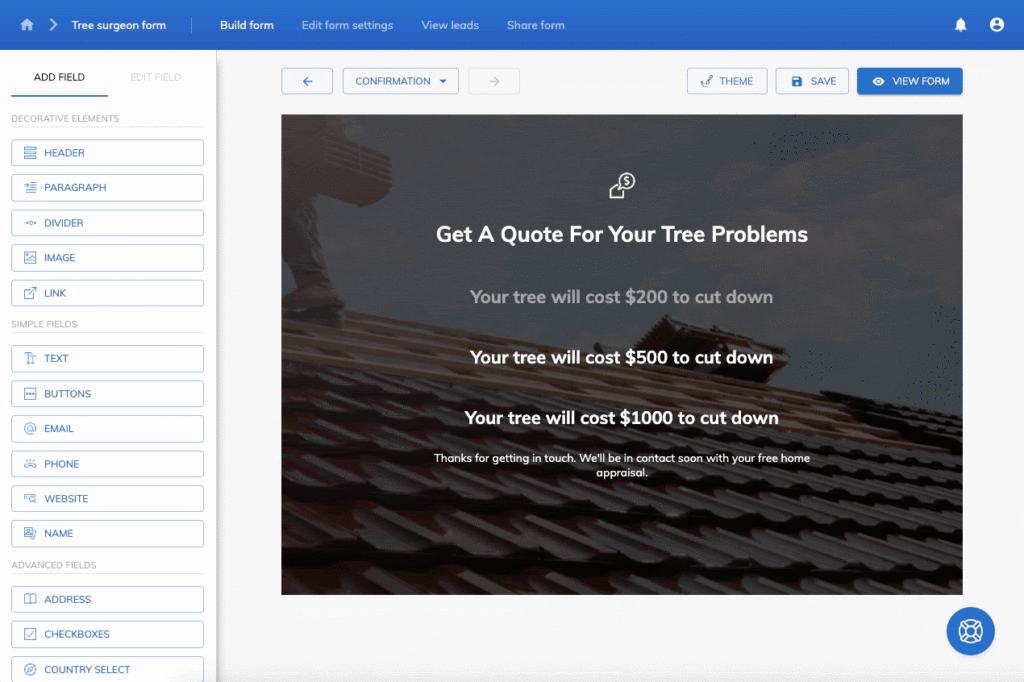
Focusing on usability and conversion optimization, Growform enables users to build forms that align with their brand and drive results. For example, our client, Nearly Real Florals, nearly doubled its conversion rates after adding Growform to its florist website.
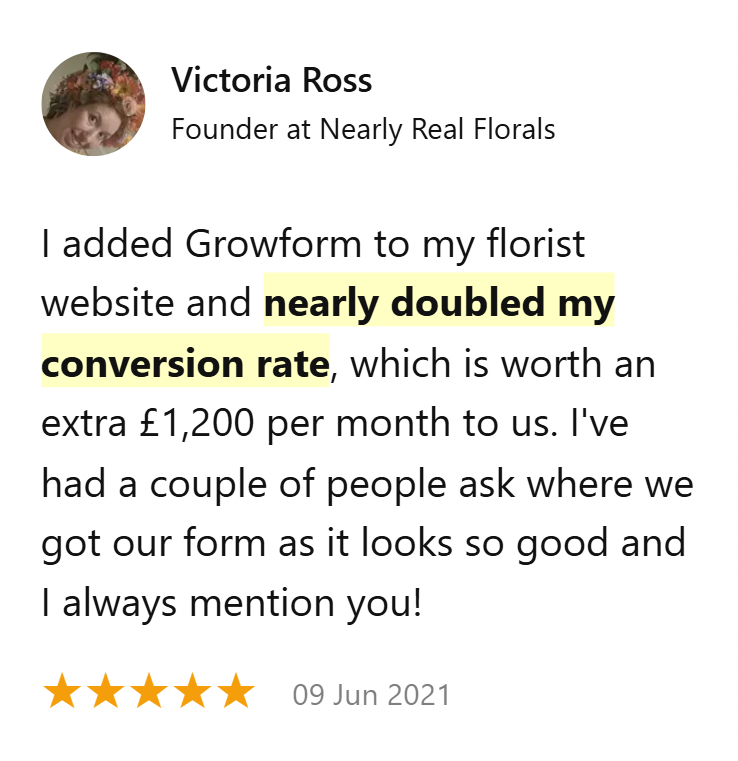
Key Features
- Multi-Step Forms: Break long forms into digestible steps to reduce abandonment and improve completion rates.
- Conditional Logic: Show or hide fields and steps based on user responses, creating a personalized experience.
- Custom Styling: Match forms to your brand with custom fonts, colors, and layouts, ensuring a cohesive look.
- Integrations: Connect with over 300 destinations via Zapier, including CRMs, email marketing tools, and spreadsheets.
- Templates: Access a library of high-performing templates tailored for various industries and use cases.
- Embed Options: Easily embed forms on websites and landing pages using HTML, iframe, or direct link methods.
Pricing

- Basic Plan ($59/month): Includes 300 leads per month, single domain embedding, and essential features.
- Professional Plan ($99/month): Offers 1,000 leads per month, embedding on up to 5 domains, and priority support.
- Scale Plan ($199/month): Includes 3,000 leads, advanced marketing features, ad tracking, and GTM integration.
- Custom (Custom pricing): For businesses with specific requirements, it offers custom integrations, 99.9% uptime, and dedicated support.
Check our Pricing Page for more details.
Pros
- Easy setup without the need for a developer
- Simple interface with drag-and-drop functionality
- Customizable and responsive designs that suit all devices
- Focused on lead generation and conversion optimization
- Mobile-optimized forms perform well on all devices
Cons
- Limited free plan with basic features and no advanced options
2. Formstack
Formstack is a powerful Microsoft Forms alternative built for organizations that need more advanced workflows, deeper integrations, and stronger form logic. Unlike Microsoft Forms, which focuses on simplicity, Formstack delivers enterprise-level tools without requiring technical expertise.
It is a no-code platform that supports multi-step forms, prefilled fields, and complex approvals, making it a reliable choice for teams managing large-scale data collection and automation.
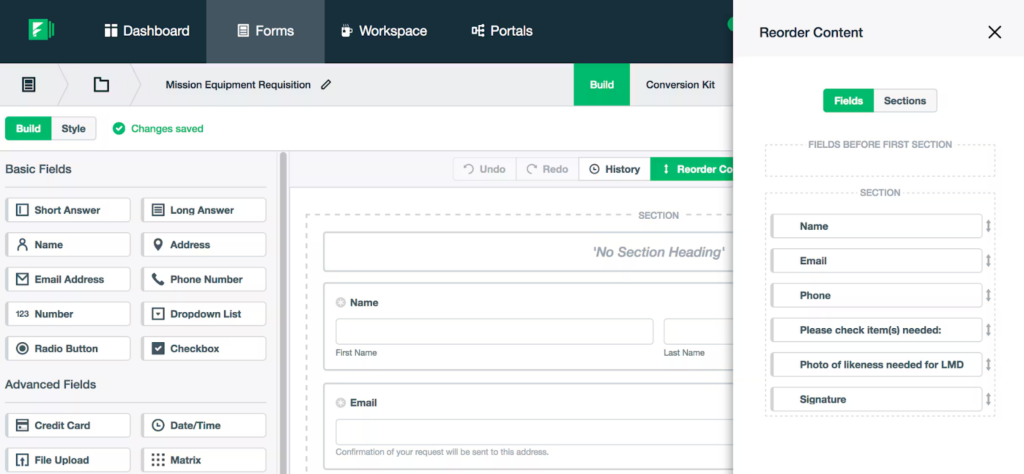
Key Features
- Conditional Logic and Approvals: Automate complex workflows by triggering specific actions based on user responses.
- Form Prefill: Reduce data entry errors by prepopulating form fields with information pulled from previous submissions, user profiles, or integrated third-party systems.
- Custom Branding: Customize logos, colors, fonts, and messaging to maintain brand consistency across all touchpoints.
- Integrations: Maximize productivity by connecting your forms with essential platforms like Salesforce, Zapier, Dropbox, Google Sheets, and more.
- Smart Lists: Keep lists like product catalogs or employee directories up to date with Formstack’s Smart Lists.
Pricing
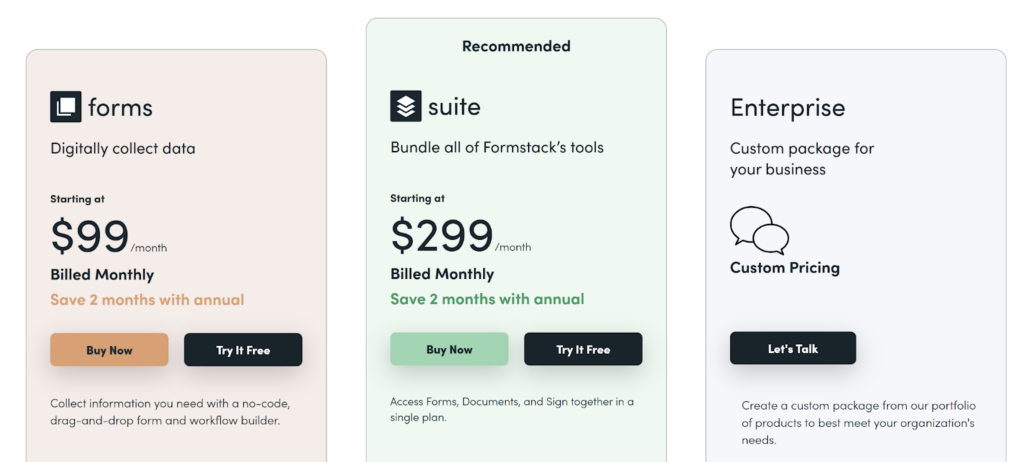
- Forms plan ($99/month: Including 25 forms, 1 user, workflows, and branding tools.
- Suite plan, offering access to Forms, Documents, and Sign, starts at $299 per month. An Enterprise plan with custom pricing is also available.
Pros
- Advanced logic and workflow automation
- Easy integration with enterprise software
- Supports complex forms without code
- Reliable performance and data handling
- Good customer support for mid to large teams
Cons
- Interface can be overwhelming for new users
- Higher pricing may not suit small businesses
- Some updates have impacted form stability on mobile
3. Paperform
Paperform is a flexible and design-friendly Microsoft Forms alternative that combines advanced functionality with a clean, intuitive interface. While Microsoft Forms handles basic form creation well, Paperform offers far more customization, automation, and branding capabilities.
It’s ideal for businesses looking to go beyond standard surveys and build interactive forms for payments, bookings, onboarding, and more, all without writing code.
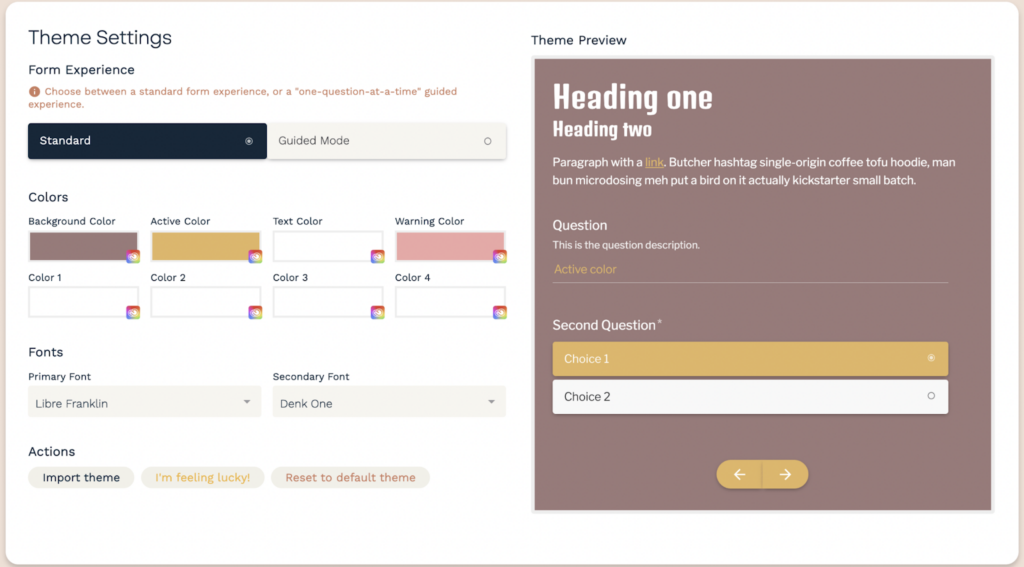
Key Features
- Custom Design and Themes: Build fully branded forms with fonts, layouts, and embedded media.
- Conditional Logic and Guided Mode: Tailor form behavior based on responses for a personalized user experience.
- Built-in Scheduling: Handle bookings with native calendar syncing and availability controls.
- Advanced Integrations: Connect to over 2000 apps, including CRM, payment, and analytics tools.
- Reports and Insights: Visualize data and create reports with built-in analytics or third-party tools.
Pricing
All plans include a 14-day free trial.
- Essentials ($29/month): 1 user, 100 submissions/month, 20 payment submissions.
- Pro ($59/month): 3 users, 1,000 submissions/month, 250 payment submissions.
- Business ($129/month): 5 users, 10,000 submissions/month, 2,500 payment submissions.
- Enterprise: Custom pricing with unlimited limits and advanced support.
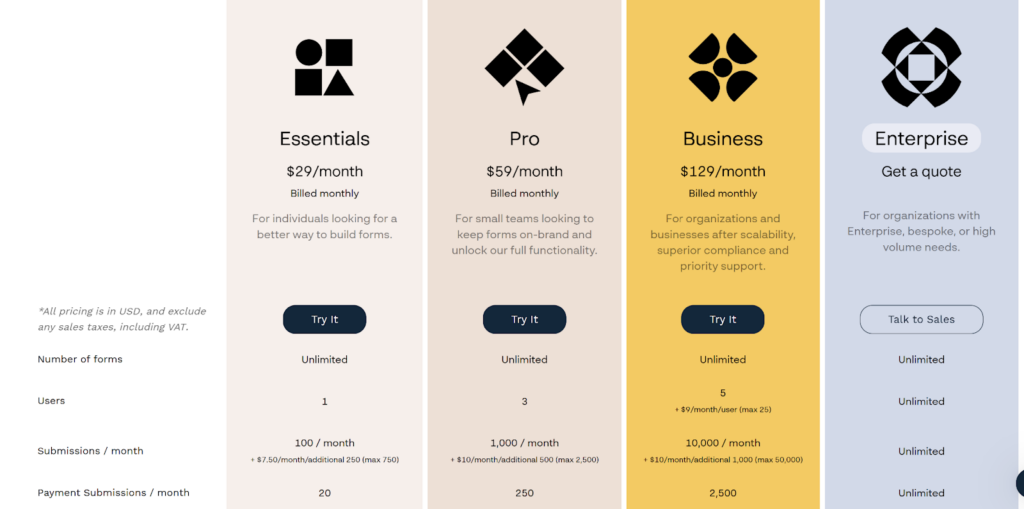
Pros
- Clean, easy-to-use editor
- Deep branding and layout control
- Strong automation and logic options
- Seamless app integrations
- Ideal for payments and scheduling
Cons
- Higher cost compared to simpler tools
- No support for partial saves on lower plans
- Limited styling options for long, multiple-choice lists
4. Wufoo
Wufoo is a cloud-based Microsoft Forms alternative, particularly suited for small teams or nonprofits that value simplicity. It adds flexibility through advanced field types, payments, and integrations, though its interface and security measures feel dated by comparison.
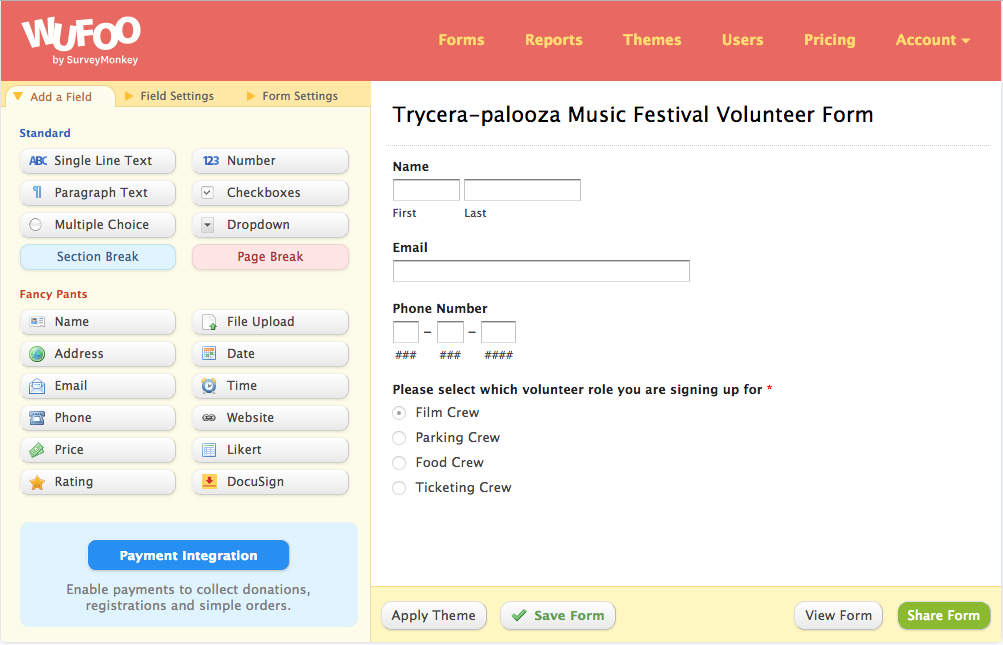
Key Features
- Theme Designer and Branding: Style forms to match your website or brand.
- File Uploads and Payments: Accept files and process payments with Stripe, PayPal, or Authorize.Net.
- Logic and Branching: Tailor forms to user input with simple conditional rules.
- Notifications and Reporting: Get alerts in real time and analyze submissions with built-in or exported reports.
- Data Export & Integrations: Easily export your form data in Excel, CSV, or PDF format. Wufoo also integrates with tools like Mailchimp, Salesforce, Dropbox, and Google Sheets.
Pricing
- Free plan: For building basic forms
- Starter plan ($16.25/month): Customized branding, confirmation email, and workflow automation.
- Professional plan ($29.08/month): Collect payments, create unlimited forms
- Advanced plan ($74.08/month): More file storage and API requests
- Ultimate ($183.25/month): Everything + increased limits
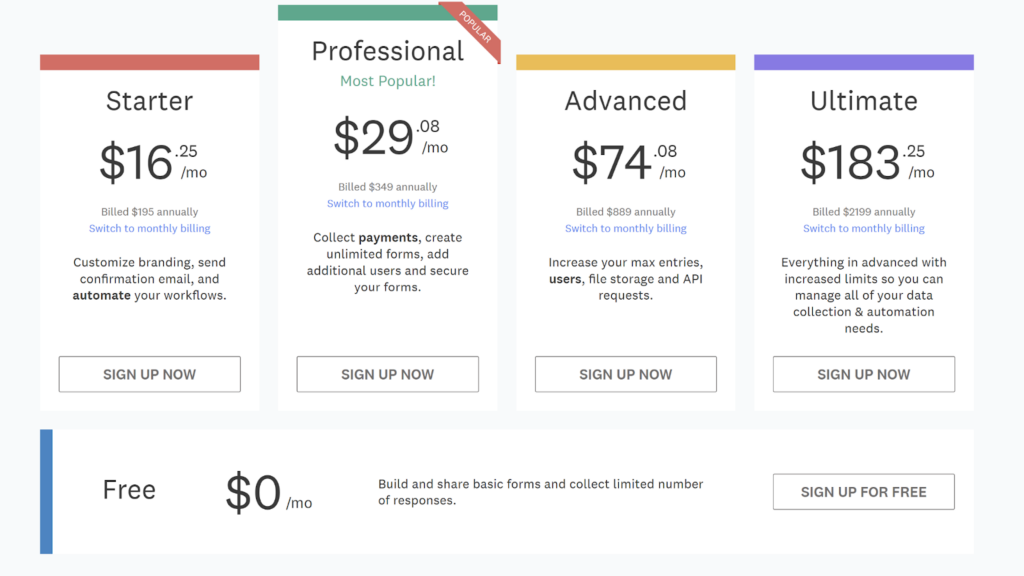
Pros
- Easy to use for non-technical users
- Quick setup and form sharing
- Accepts payments and file uploads
- Basic logic and integrations available
- Affordable entry-level pricing
Cons
- Lacks modern interface and design flexibility
- No CAPTCHA or reliable spam protection
- Limited reporting and analytics features
5. Zoho Forms
Zoho Forms is a flexible Microsoft Forms alternative for users who need a solution similar to Google forms, but without the high costs. While Microsoft Forms offers simplicity and speed, Zoho Forms gives businesses more control over branding, logic, and workflow automation, making it suitable for both small teams and enterprise use.
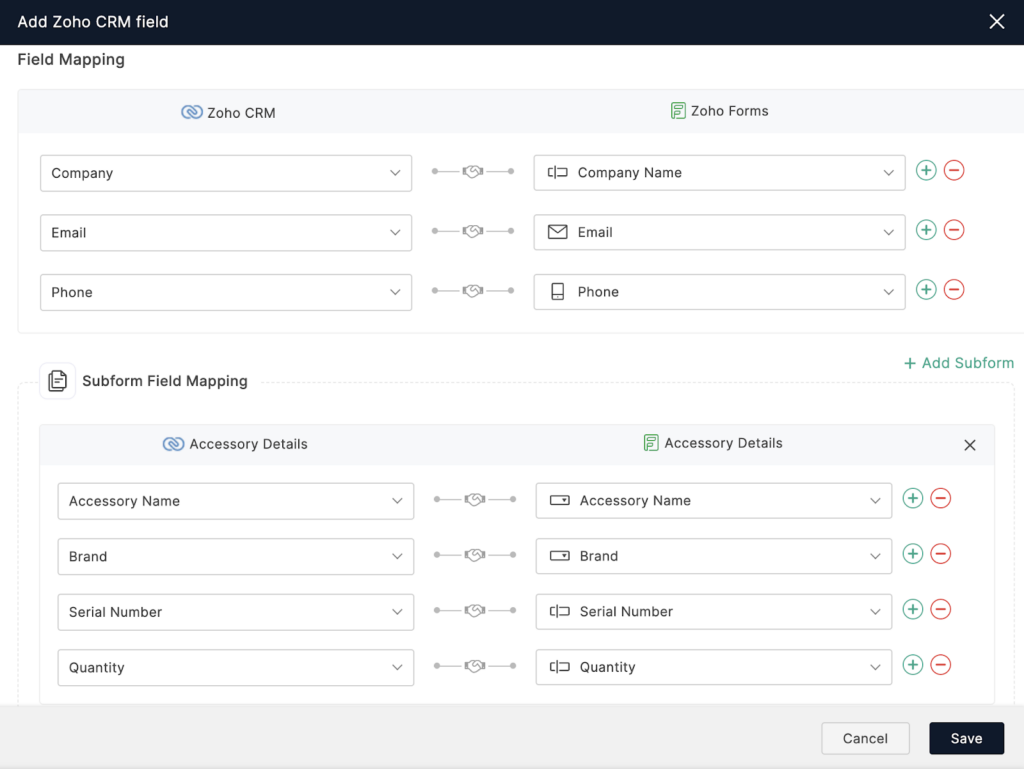
Key Features
- Workflow Automation: Set up approval processes, task assignments, and custom email alerts.
- Conditional Logic: Show or skip questions and pages based on user input.
- Branded Design: Match your form’s appearance to your brand with themes, CSS, and custom domains.
- Integrations: Connect with 150+ tools, including Zoho CRM, Google Sheets, and Zapier for automated data transfer.
- Data Management and Analytics: You can track submission trends, generate reports, and even schedule them for regular delivery, helping you make informed decisions.
Pricing
- Free plan with basic form creation features
- Basic plan ($12/month): 1 user, unlimited forms, and 10,000 submissions per month.
- Standard ($30/month): 10 users, unlimited forms and 25,000 submissions per month
- Professional ($60/month): 25 users, 75,000 submissions per month, and 5GB file storage.
- Premium ($110/month): 100 users, 150,000 submissions per month, and 10GB file storage.
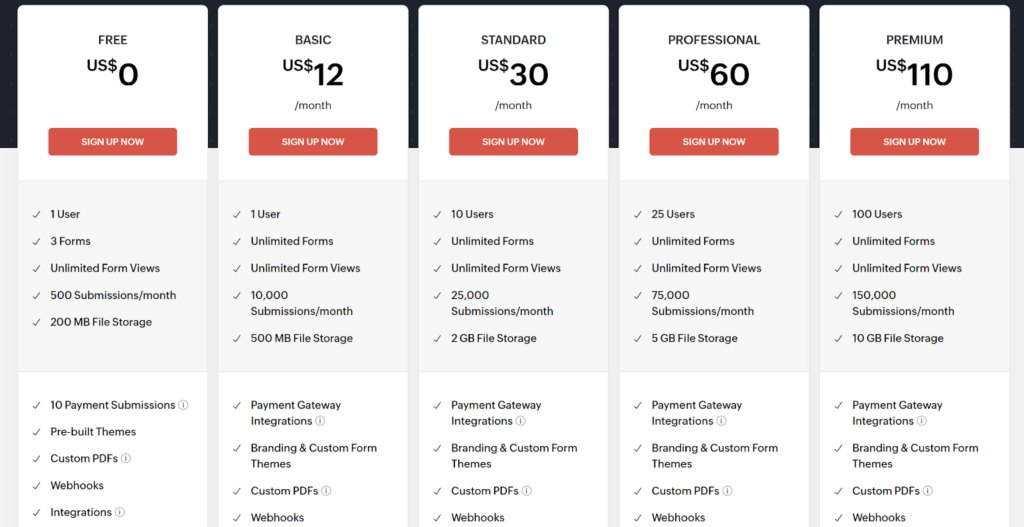
Pros
- Strong customization and branding tools
- Broad integration options
- Includes offline access and mobile apps
- Supports advanced automation and logic
- Part of the broader Zoho ecosystem
Cons
- Design flexibility can feel limited
- Support quality varies by region
- Some advanced features have a learning curve
6. Google Forms
The last Microsoft Forms alternative on the list is Google Forms. It’s a straightforward and accessible form builder that stands as both a peer and a baseline Microsoft Forms alternative. While both tools offer basic functionality like quizzes, surveys, and data collection, Google Forms is often preferred for its tight integration with Google Workspace and ease of use across devices. It’s best for individuals, educators, and small teams who need a no-cost solution for lightweight forms and basic reporting.
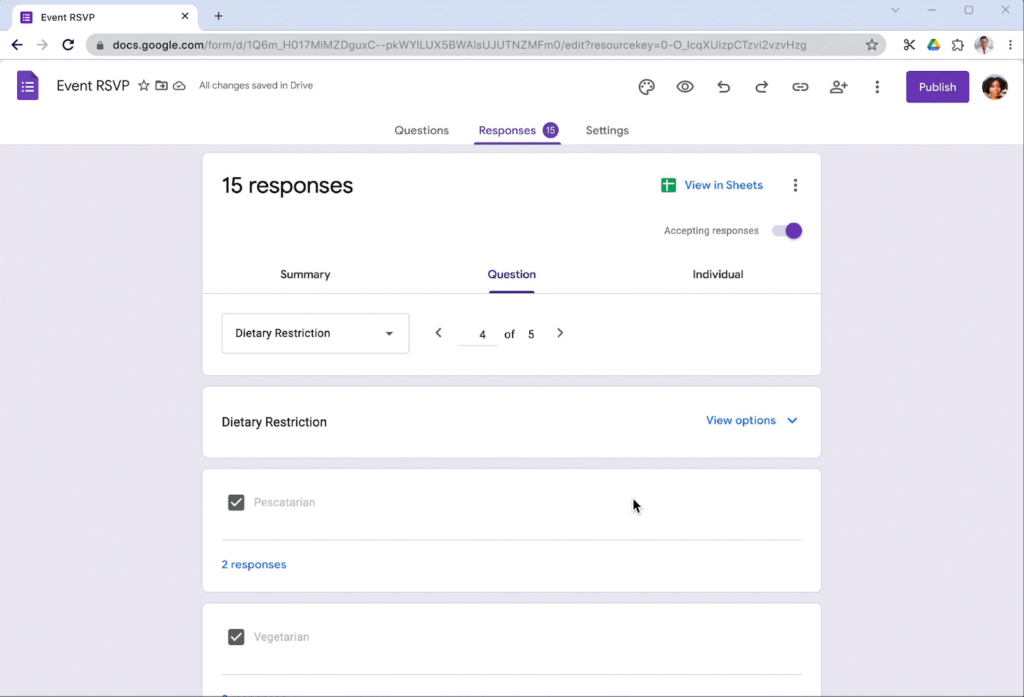
Key Features
- Templates: Start quickly with prebuilt templates for surveys, quizzes, and feedback forms.
- Conditional Logic: Set simple rules to guide users based on their responses.
- Real-Time Collaboration: Build and edit forms simultaneously with teammates.
- Automatic Charts: View visual summaries of responses as they come in.
- Built-in Analytics and Google Sheets Integration: Responses are automatically collected in Google Forms and can be instantly viewed in summary charts or exported to Google Sheets.
Pricing
Google Forms is free for personal use. For business needs, it’s included in Google Workspace plans starting at $6.30 per user monthly for a one-year commitment.
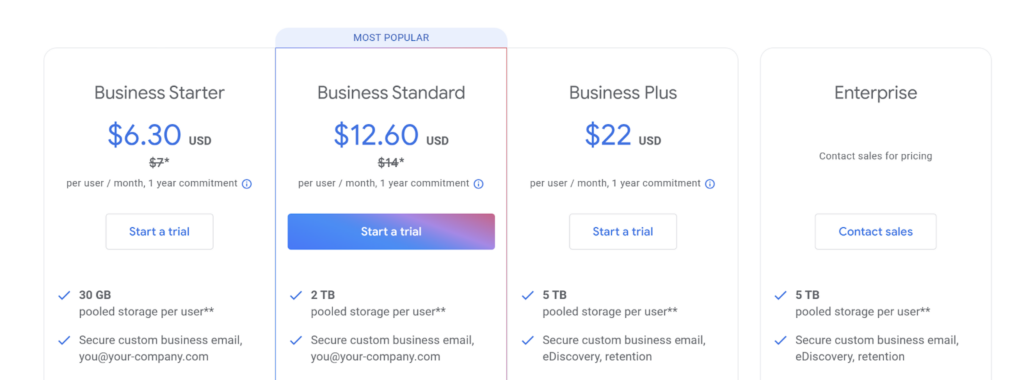
Pros
- Free for individual users
- Seamless integration with Google Sheets
- Easy to use and accessible across devices
- Auto-save for partially completed forms
- Live collaboration support
Cons
- Limited design and styling options
- Basic conditional logic
- Few native third-party integrations
Build Smarter Forms with Growform
If Microsoft Forms isn’t meeting your needs, this list compiles other alternative tools you can use if you need advanced logic, stronger branding, or more lead-focused features. Lead generation is at the center of every business. For you to convert, you must attract quality leads, that’s where Growform stands out.
Growform helps marketers and agencies create clean, multi-step forms that convert more leads, without writing any code. With smart logic, flexible styling and deep integrations, it’s built to give you the results you need.
Start your 14-day trial today to see how Growform can work for you.
Recent Posts
- Anatomy of a Landing Page: 12 Essential Elements for Higher Conversions
- 8 Best Webinar Landing Page Examples to Boost Signups
- 10 Best ClickFunnels Landing Page Examples That Actually Convert
- How to Improve Landing Page Optimization and Boost Conversions
- Landing Page Metrics That Matter: 12 KPIs to Boost Conversions
